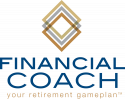"WHERE DOES ALL THE MONEY GO?"
 This is a typical refrain in many households as families struggle to get a handle on month-to-month expenses and cash flow management. My wife Carmen and I are no exception, and in our attempt to buck this all too prevalent trend, we decided to get financially organized prior to our youngest child being born. We were aware of the “slippage” that occurred in our monthly budget but we were not sure exactly why it all wouldn’t add-up.
This is a typical refrain in many households as families struggle to get a handle on month-to-month expenses and cash flow management. My wife Carmen and I are no exception, and in our attempt to buck this all too prevalent trend, we decided to get financially organized prior to our youngest child being born. We were aware of the “slippage” that occurred in our monthly budget but we were not sure exactly why it all wouldn’t add-up.
With 5 kids and all of their various activities, we were losing track of the costs associates with teams, clubs, equipment, technology, etc. The open questions about our cash flow, and the seemingly small cracks through which money would slip, often created tension and discord during family financial planning discussions. The combination of not having a good handle on where all of the money was going along with no real strategy to prioritize expenses was a ticking time bomb planted beneath our otherwise blissful marriage (wink wink).
Our youngest daughter is now 10 years old, and over this last decade we have learned some very important lessons and implemented some very effective techniques to be more mindful and opportunistic with our monthly cash flow.
DETERMINE WHERE ALL OF THE MONEY IS GOING
 This was a huge element that was missing from our plan. We just didn’t have a solid accounting of the various costs that we incurred on a month to month basis, and candidly we avoided the tedious process of figuring it all out. At New Wealth Project, we created a tool called The Cash Flow Roadmap that helps families begin to account for their various expenses, ultimately determining how effective they are in managing the family finances. The Roadmap makes the process simple by starting with Gross Income, and then working through Non-discretionary expenses (must pay), then Discretionary expenses (chose to pay), and ultimately providing the household with 2 things:
This was a huge element that was missing from our plan. We just didn’t have a solid accounting of the various costs that we incurred on a month to month basis, and candidly we avoided the tedious process of figuring it all out. At New Wealth Project, we created a tool called The Cash Flow Roadmap that helps families begin to account for their various expenses, ultimately determining how effective they are in managing the family finances. The Roadmap makes the process simple by starting with Gross Income, and then working through Non-discretionary expenses (must pay), then Discretionary expenses (chose to pay), and ultimately providing the household with 2 things:
- An accounting of where all of the money is going
- Where opportunities exists to maximize efficiency and minimize waste
This clarity of facts was also helpful in creating cohesion between my wife and me. When the cash flow situation becomes clear, and all parties are made aware of the “nuts and bolts”, a strong foundation is being laid for building a more strategic and effective financial plan.
SET SPECIFIC MONEY GOALS
Improving the “nuts and bolts” of the cash flow plan will not work until financial goals are established. In a previous article, “3 Reasons Why Setting Money Goals Matters“, I outlined that the foundational step in developing a financial plan is to establish the family’s financial mission. The team at New Wealth Project suggests starting this journey by answering the following questions.
- What do I want my life to look like in 3 years?
- Personally, Professionally, Spiritually, etc.
- What are the most exciting financial opportunities that I want to take advantage of?
- Savings goals, college accounts for kids, emergency fund, etc.
- What are the most pressing financial dangers that I want to eliminate?
- Pay down debt, improve my insurance plan, etc.
The process of answering these questions galvanized Carmen and me in our effort to maximize our family’s financial situation. It also allowed us to start to uncover areas of concern where we were not allocating money in a way that truly aligned with our mission. So, the clarity gleaned from Lesson #1 combined with the specific goals documented in Lesson #2 became the springboard for a more effective allocation of our monthly income.
PRIORITIZE YOUR CASH FLOW TO MATCH THE FAMILY FINANCIAL MISSION
 This step establishes where the money goes out each month. For Carmen and me, these decisions become clearer and easier in the context of specific and written objectives, and now armed with the details from The Cash Flow Roadmap, we developed our plan for the disbursement of funds. We would recommend that families consider the following priorities when directing their cash flow:
This step establishes where the money goes out each month. For Carmen and me, these decisions become clearer and easier in the context of specific and written objectives, and now armed with the details from The Cash Flow Roadmap, we developed our plan for the disbursement of funds. We would recommend that families consider the following priorities when directing their cash flow:
» Family Emergency Fund
Is there enough money set aside, in available cash, to deal with a family financial need? These “needs” might include a home appliance repair or replacement, a car repair, healthcare need not covered by insurance, loss of income from unemployment, etc.
- For most families, the “emergency fund” should land on the top of the priorities list until approximately 3-6 months of living expenses are available in cash.
» Credit Card “pay-down” vs. Retirement Savings
This one is often discussed in the financial planning profession, and my wife and I followed the conventional wisdom and paid-down high interest debt. The math was simple.
- Expected return on Retirement Savings vs. Interest Cost of the Credit. It is very clear that expected long-term returns in stock funds (8-10%) would pale in comparison to the interest cost of carrying a balance of a credit card (12-18%). We agreed that we would get the best bang for our buck if we focused on eliminating high interest debt first.
» Retirement Savings
We would have been remiss if we did not add anything to our retirement savings, as our biggest ally as a young family is time. So after focusing on our emergency fund and paying down high interest debt, we allocated savings to growth securities in our 401(k)’s to ensure we were maximizing the long term trajectory of the stock market savings.
» College/Higher Education Savings
As mentioned previously, Carmen and I are raising 5 children, so the cost of higher education is an ever present element in our financial planning discussions.
- Higher Education savings lands in “4th place” on our priorities list because we know that we can borrow to fund college, while we have limited borrowing options to fund our retirement. We are aware, however, that the escalating cost of secondary and college education warrants real planning and legitimate savings, and with 5 students, it adds up to a lot of dollars.
- In the state of Pennsylvania, my home state, Section 529 Plan contributions qualify for PA State Income Tax deduction. The earnings on the savings grows tax deferred, and ultimately can be withdrawn free of any taxes if used for “qualified” higher education expenses. These expenses include, but are not limited to, Tuition, room and board, technology, and books. Carmen and I agree that the 529 Plan was the best vehicle to use in building savings for our children’s future education expenses.
» After Tax Savings
If you find yourself with excess cash flow after all the bills are paid and savings have been allocated, then you are in an envious position. Through your hard work and diligent planning, you have opened some new doors of opportunity that can be taken advantage of. This savings can be used:
- For a specific goal or objective — second home, boat, travel, etc.
- As a supplement to the Emergency Fund or College Savings
- As another tool in your long term retirement plan
This after-tax savings offers flexibility in the cash flow plan and can increase confidence in the strength of the long-term financial plan.
DON'T IGNORE THE FUN
 There is a delicate balancing act between disciplined cash flow management and creating family memories and lasting experiences. At New Wealth Project, the view is that the careful allocation of your hard earned money and the diligent review of your expenses and priorities will lead to more opportunities, not less. The techniques and lessons discussed throughout this article are believed to bring families and couples together in a unified way, allowing those who put in the time to maximize and optimize their hard earned dollars to reap substantial rewards.
There is a delicate balancing act between disciplined cash flow management and creating family memories and lasting experiences. At New Wealth Project, the view is that the careful allocation of your hard earned money and the diligent review of your expenses and priorities will lead to more opportunities, not less. The techniques and lessons discussed throughout this article are believed to bring families and couples together in a unified way, allowing those who put in the time to maximize and optimize their hard earned dollars to reap substantial rewards.
» Plan for your “wants”, not just your “needs”
As part of the family goal setting process, it is important to discuss and document exciting future opportunities like travel and vacations. These types of goals are important motivators and help families remain focused on their cash flow process throughout the year.
- Big results can often occur from even small incremental steps. Success breeds success so remaining focused on progress rather than perfection will keep the “juices flowing” and will reinforce the importance and effectiveness of these productive behaviors.
DO AN ANNUAL REVIEW... at least
Carmen and I have found that the systematic nature of reviewing the details of our plan, and revising our goals and priorities, continues to add energy and excitement about our future. We have found new and better ways to not only use our income to meet our financial goals but to interact and communicate about our joint mission. After many fits and starts, and learning from our mistakes over the years, we have become a more productive team and plan together in a fun and inclusive fashion. We hope that you and your family can find similar results from your planning endeavors as well.
